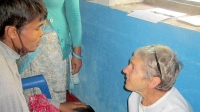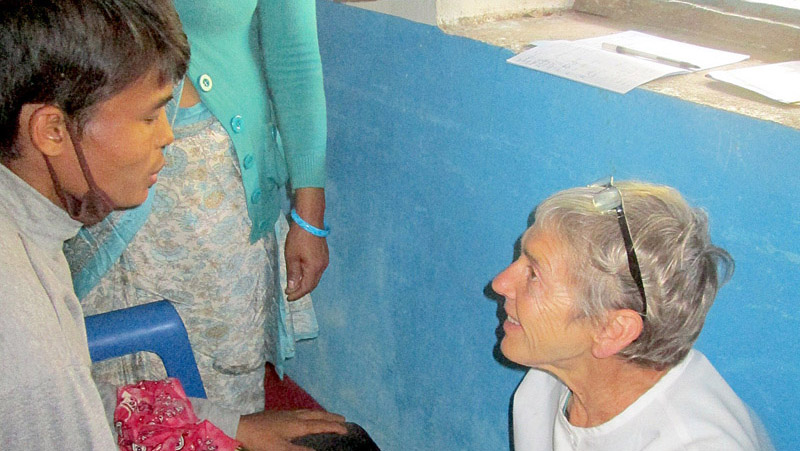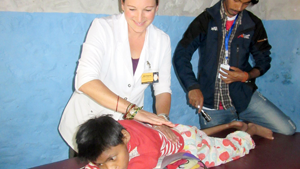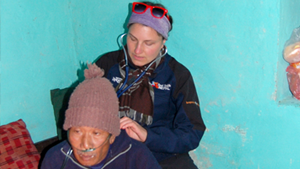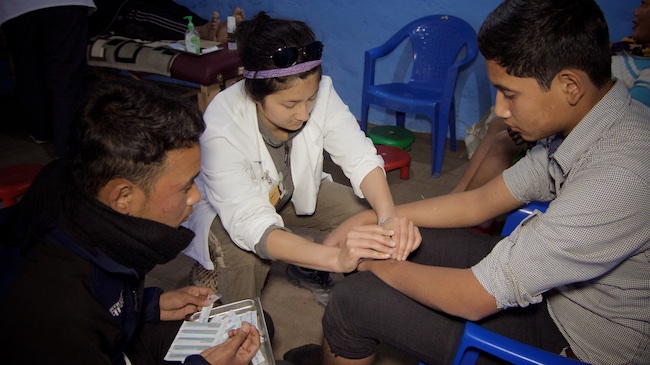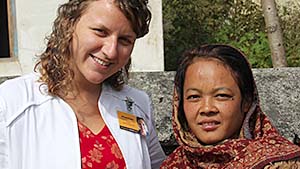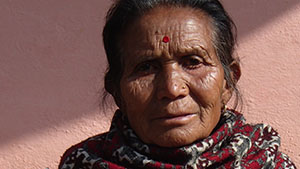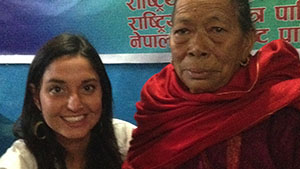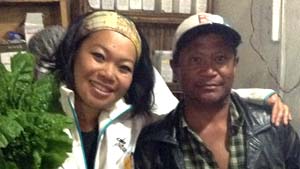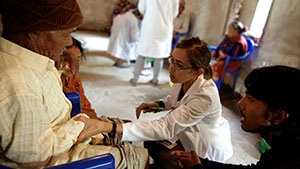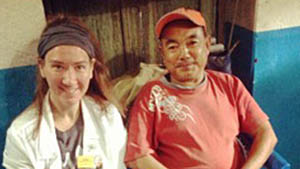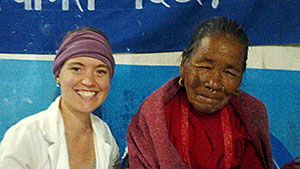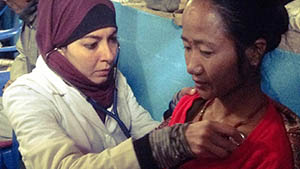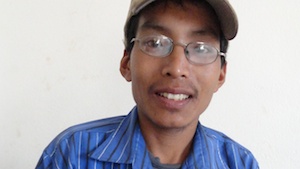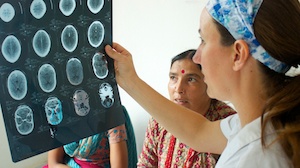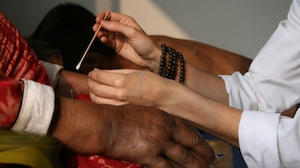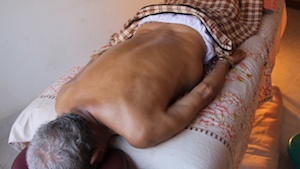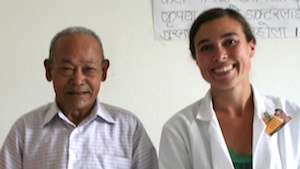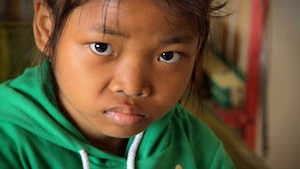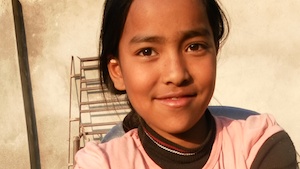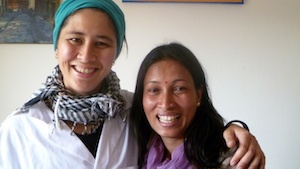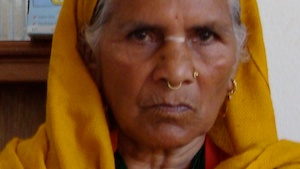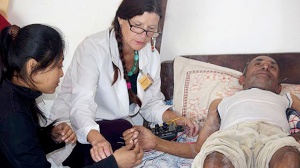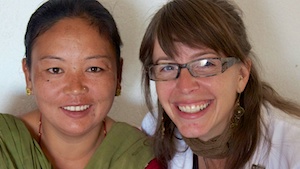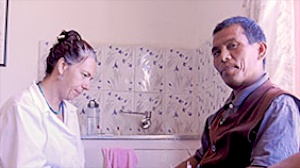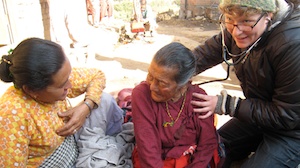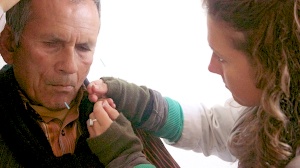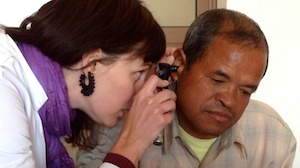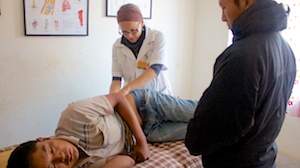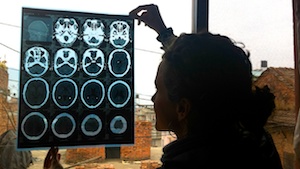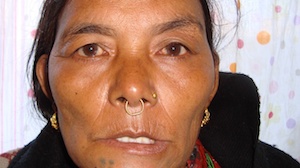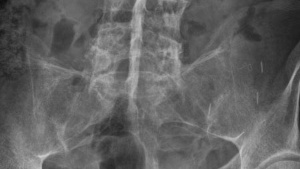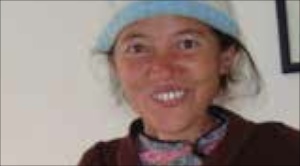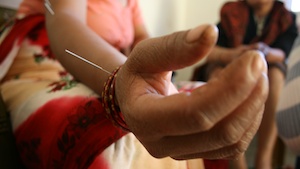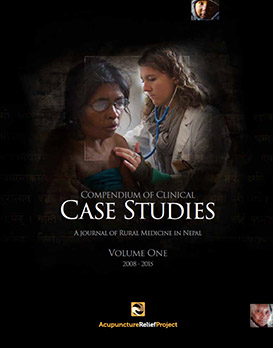Chanel Smythe MS RAc TCMP
November 2013
OVERVIEW
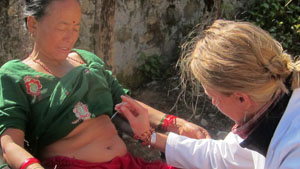 52-year-old female presents with chronic, burning epigastric pain accompanied by acid reflux, nausea, belching and decreased appetite. The patient also experiences daily headaches and dizziness. With conjunctive therapy of acupuncture, Chinese herbal medicine and antacid treatment, the patient reported an 80% improvement in her condition over 10 treatments, experiencing a decrease in severity, frequency and the absence of many symptoms.
52-year-old female presents with chronic, burning epigastric pain accompanied by acid reflux, nausea, belching and decreased appetite. The patient also experiences daily headaches and dizziness. With conjunctive therapy of acupuncture, Chinese herbal medicine and antacid treatment, the patient reported an 80% improvement in her condition over 10 treatments, experiencing a decrease in severity, frequency and the absence of many symptoms.
Subjective
Patient is a 52-year-old female who presents with moderate epigastric pain, a complaint that the patient has had for 6 to 7 years. The pain manifests as a burning sensation in the epigastric region, at times exacerbated when the patient eats, while at other times is relieved with food. Occasionally, the patient wakes in the night due to her gastric pain. She experiences acid reflux after eating, a decrease in appetite, belching and nausea both on empty stomach and after eating. The epigastric pain is aggravated by the consumption of spicy and greasy foods. Bowel movements are daily, formed and easily passed without pain. The patient denies diarrhea or loose stools, blood or mucus in the stools, and vomiting.
The patient also experiences both headache and dizziness daily, which she has had for 1 year. The headache manifests as a throbbing pain, located primarily in the temporal region and occasionally in the frontal region. Dizziness occurs mostly when the patient moves from a seated to standing position, though occasionally she will experience dizziness when attempting to focus on a point in the distance. The dizziness can be accompanied by blurry vision.
The patient experiences sleep disturbances with both difficulty falling asleep and difficulty staying asleep, often waking several times throughout the night. She reports a feverish sensation in the afternoon, and night sweats.
The patient’s diet consists primarily of rice, lentils, vegetables, chickpeas and dado (corn meal and buckwheat).
The patient has not received any medical treatments for her gastric pain, headaches or dizziness.
Objective
Despite the patient’s complaints of gastric pain, headache and dizziness, she appears to be in good health for her age and environment.
She experiences a moderate level of epigastric pain and acid reflux after every meal. Nausea and belching is experienced daily. Headaches and bouts of dizziness are also a daily occurrence. Abdominal palpation reveals no masses or objective tenderness in any of the 4 quadrants or on the midline, and no indication of an enlarged Liver or Spleen. Both Murphy's sign and McBurney's point are negative. The patient’s blood pressure is 120/70 mm/Hg. Tongue is pale with fissures throughout body. The pulse is thready.
Assessment
DX: Chronic non-erosive gastritis, gastric ulcer, potential duodenal ulcer
TCM DX: Stomach yin deficiency, Liver and Kidney yin deficiency It is suspected that the patient has non-erosive gastritis accompanied by a gastric ulcer, and potentially a duodenal ulcer. Though nonerosive gastritis is generally asymptomatic, it manifests as mild dyspepsia and other vague symptoms, which are part of the patient’s presentation. Additionally, non-erosive gastritis is commonly caused by Helicobacter pylori (H.pylori), a bacteria that is speculated to be in the local water supply in considerable quantity.
Accompanying the gastritis, a gastric ulcer is suspected. Gastric ulcers manifest as a variable pain picture in which the epigastric pain does not follow a regular pattern. A common manifestation of a gastric ulcer, in which eating sometimes exacerbates rather than relieves the pain, is consistent with the patient’s pain presentation. On occasion, the patient wakes at night due to her epigastric pain, a common manifestation, and suggestive of a duodenal ulcer. However, the patient does not possess any of the other defining characteristics typical of a duodenal ulcer. Such symptoms include a consistent pain pattern of absence of pain when waking, pain that appears midmorning, is relieved by food, but recurs 2 to 3 hours after a meal.
Similar to that of non-erosive gastritis, gastric ulcers are commonly caused by H.pylori or overuse of NSAIDs. The patient lacks a history of NSAID use, further suggesting that the suspected ulcer is a result of an H.pylori infection.
Stomach cancer is not likely with this patient’s presentation as there is no occult blood in the stool or concurrent symptoms that often accompany cancer, such as weight loss or extreme fatigue, etc. Stomach cancer may become a concern in the future if the gastritis is due to a H.pylori infection, as it has been shown that the occurrence of stomach cancer is 3 to 6 times more common in persons with H.pylori infection.
Prognosis
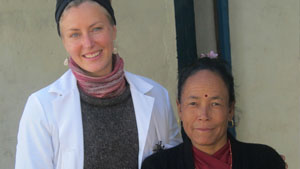 With regular acupuncture, in conjunction with herbal and antacid treatment, the patient is expected to experience a minimum of 50% improvement in her epigastric pain and associated symptoms. Progress is contingent upon patient’s compliance to the treatment plan, and taking herbal and antacid supplementation as prescribed, as well as the avoidance of trigger foods.
With regular acupuncture, in conjunction with herbal and antacid treatment, the patient is expected to experience a minimum of 50% improvement in her epigastric pain and associated symptoms. Progress is contingent upon patient’s compliance to the treatment plan, and taking herbal and antacid supplementation as prescribed, as well as the avoidance of trigger foods.
If the patient experiences little to no response to the conjunctive therapy within 10 treatments, an endoscopy and stool analysis would be indicated to rule out microscopic blood in the stool. If endoscopy proves H.pylori infection, triple antibiotic therapy is indicated. Proton Pump Inhibitor (PPI) therapy would also be indicated at this time to help further mitigate stomach acid.
Both interventions would be supplemented with concurrent acupuncture.
Plan
Treat with acupuncture 3 - 4 times per week with daily intake of Chinese herbal medicine and antacids. The patient receives 10 treatments, after which there will be a reassessment of the patient’s condition.
Treatment Principle: Clear Stomach heat, nourish yin, promote ulcer healing, and reduce ulcer recurrence.
Acupuncture: Acupuncture treatments generally focus on clearing empty heat from the Stomach and nourishing yin of the Kidneys and Liver.
Typical acupuncture points utilized in treatment consist of ST44, REN12, REN6, ST25, P6, REN17, ST36, KI3, SP6, KI10, LV8, LV3 and LI4.
Chinese herbal medicine: Internally, formulas to tonify Kidney, Liver and Stomach yin, and clear Stomach heat
Liu Wei Di Huang Wan: 3 pills BID for the first 2 weeks of gastritis treatment to simultaneously address the headaches and dizziness
Stomach Formula (Mayway): 3 pills TID for the following week of treatment with focus on nourishing Stomach yin and clearing Stomach heat
Antacid Treatment: Mitigation of Stomach acid to reduce pain; 2 tablets 5-10 minutes before meals and 2 tablets before bed
Lifestyle Advice: Counsel patient to avoid foods that trigger gastric pain, namely spicy and greasy foods.
Outcome
After 10 treatments, the patient reported an 80% decrease in her gastric pain and associated symptoms, as well as her headache and dizziness. She no longer experienced burning epigastric pain upon waking in the morning, and the epigastric pain that remained had decreased from a moderate level of pain to a low level of pain. Additionally, she no longer experienced any acid regurgitation after meals, or belching before or after eating. Her nausea became sporadic, rather than daily, and decreased in severity. She reported an improvement in her appetite. She still woke several times in the night, though gastric pain was no longer the cause. The patient could not note if there was more improvement in her epigastric pain and associated symptoms on either Liu Wei Di Huang Wan or Stomach Formula.
Her headaches decreased in severity and frequency. Before treatment, she experienced headaches daily. After treatment, she could last several to many days without a headache. Her dizziness was still consistent, though it decreased in severity. Additionally, she no longer experienced night sweats, and the heat sensation in the afternoon decreased in severity and frequency. The patient reported more significant improvement in her headaches and dizziness, night sweats and heat sensation while taking Liu Wei Di Huang Wan.
The patient would experience a recurrence of her epigastric pain when she would overindulge in spicy and/or greasy foods.
Discussion
According to the District Health Office of Makawanpur, 80% of cases reported to the Hetauda Hospital are for epigastric pain or gastritis. Therefore, it is pertinent to address the nature of gastric pain and what effect acupuncture, Chinese herbs and other forms of supplementation can have on the condition.
The patient responded well to the treatment plan, with combination therapy of acupuncture, herbs and antacids, with varying degrees of efficacy at mitigating the patient’s symptoms outlined above. The combination therapy is important for the management of the patient’s epigastric pain, and I think that decreased efficacy would result if treatments were to be used out of combination. With continued treatment, it is expected that the patient will continue to improve.


